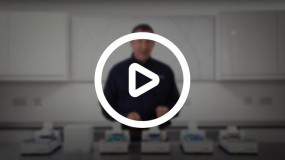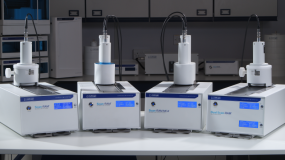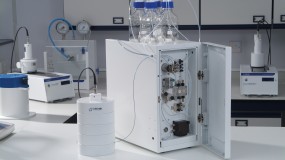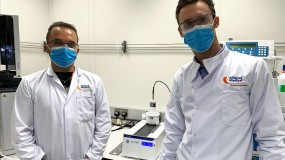Der innovative, flexible und GxP-Konforme Radio-TLC-Scanner
Die Kombination aus PET/SPECT-Radio-TLC-Scanner und Radio-HPLC-Detektor wurde für die Erfüllung aktueller QC-Anforderungen in der Radiopharmazie entwickelt.
Die beiden Detektionssysteme können unabhängig voneinander genutzt werden und ermöglichen damit eine hohe Flexibilität bei den Messungen. Die Kompaktheit des Systems spart außerdem wertvollen Platz im Labor.
What is the Scan-RAM operating tolerance?
Because the detector sweeps the scanning bed, there is an operating tolerance requirement, and as such the required operating space is the same as the footprint of the instrument
Why do I need the TLC support beds?
These beds have been provided for your own safety and to minimise finger dose exposure.
Can I clean the TLC support beds?
Yes you can clean them with standard cleaning solutions.
Where do I store my TLC support beds?
The TLC support beds are stored underneath the instrument, in the built-in racks provided.
Can I use the same Scan-RAM for different radionuclides?
Yes you can. The Scan-RAM is available with a range of interchangeable detectors for different radionuclides and different levels of radioactivity.
What is the difference between Dual and Single Scan-RAM?
The Dual Scan-RAM is two instruments in one. It is a radio-TLC scanner and radio-HPLC detector. This instrument is ideal for customers who have to analyse their samples by both methods as it saves on capital expenditure and operating space.
The Single Scan-RAM, is radio-TLC scanner only that I used for radio-TLC analysis.
What is the size of the crystal in your detectors?
We offer a range of different crystal sizes to meet different requirements. If you know what radionuclides you will work with, LabLogic will furnish you with information on the recommended detector and crystal size.
What happens if a component stops working In the Dual Scan-RAM?
The electronics in the Dual Scan-RAM are separate for radio-TLC and radio-HPLC.
In the unlikely event that one set of electronics develops a fault, the use of the radio-HPLC, or radio-TLC depending upon what happens, would not be affected.
Do you have to sellotape TLC strips to the scanning bed?
No you do not. The scanning bed is stationary and it is the detector that sweeps the bed.
Also, your TLC strips are held by the TLC support beds which are locked in place by soft buttons.
How do I change the operating parameters?
All operating parameters are changed through Laura for PET software where a full audit trail of the changes is recorded.







